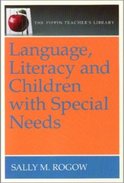- Home
-
Learn
- History of VI >
- Legislation & Laws >
- Vision Professionals >
-
VI Program Resources
>
- Program Printables
- Itinerant Teaching Tips
- Year at a Glance
- VI Program Handbook
- Caseload Analysis
- Organization & Time Management
- Professional Development
- Teacher Standards
- Professional Ethics
- Awards & Recognition
- APH Scholar Program
- Professional Organizations
- Certification Organizations
- Dealing with Challenges
- Professional Publications >
- Relatable Books for All Ages >
- Family Resources >
- Plan
- Basics
-
Teach
- Teaching Strategies >
-
Compensatory Skills Instruction
>
-
Social Skills
>
-
Self Determination
>
- Body Image & Acceptance
- Making Personal Goals
- My Vision Presentation
- My Self-Description
- Create a Personal Data Sheet
- Disclosure Decision
- Disability Statement
- Requesting Help
- Fighting Fears
- My Circle of Support
- Personal Responsibility
- Advocate for Safe Enviroments
- Having Picture Taken
- Coping with Change
- Aging Eyes
- Physical Characteristics
- Political Activism
- Laws Regarding Persons with Disabilities
-
Sensory Efficiency
>
-
Independent Living
>
- Orientation & Mobility Instruction >
- Recreation & Leisure >
-
Career & Vocation
>
-
Grow
- Complete Set Bonus >
-
Recorded Presentations
>
- Webinar: Tips for Being a "Physically Fit" TVI
- Webinar: The Art of Teaching the ECC
- Webinar: Virtual & F2F Strategies
- Webinar: Foundations of Teaching the ECC in the Age of Virtual Instruction
- Webinar: Itinerant Teaching Strategies
- Webinar: Using Themes to Teach the ECC
- Webinar: Conducting a FVLMA
- Webinar: Selecting the Right AT
- Webinar: Developing SMARTER Goals
- Webinar: Determining Service Intensity Using the VISSIT
- Webinar: Activities to Teach the ECC
- Webinar: Accessible Content for BLVI
- Webinar: Accommodations for VI
- Webinar: MIMO Strategies & Activities
- Webinar: SIDPID Strategies & Activities
- Webinar: Standard Course of Study Strategies & Activities
- Webinar: Job Tasks for Job, Career & Life
- Shop
- Jobs
Read AloudBy: Carmen Willings
teachingvisuallyimpaired.com March 24, 2024 In reading aloud, the teacher reads aloud from a book. Reading aloud to the students should be a daily occurrence for students of all ages as studies have shown that it positively impacts students success in learning to read. Prior to reading the book, provide a summary of the story. Also explain vocabulary that may be unfamiliar to the students. This will give the students a chance to identify the word, place it in context and remember it. Concentrating on concept and vocabulary development will assist students with learning disabilities including those with visual impairments. As you read the story, point to key words on each page to help students make the connection between print and spoken words. If the student is a braille learner, someone knowledgeable in the braille code should ensure the student is able to be exposed to these same opportunities. Remember to read with inflection and intonation.
When presenting the selected reading to the students, discuss with them that you are going to read a book and for what purpose (e.g. learn more about the topic, to read a certain style, etc.) Discuss the title and describe the picture. Encourage students to answer literal question (review and update answers after story is read). Ask students to predict who, what, where, when, and why events happen. Consider having a story helper to hold the book and help turn the pages. Before you begin a story, read the title and ask your student what the story might be about. Take some time to recall similar experiences that you and your student have had that relate to the story. Present the objects from the story. Encourage the students to explore the materials and make educated guesses about what the story will be about. As you read aloud to your student, you can help them develop a sense of “book behavior” or basic conventions of reading. These behaviors are things like holding a book right-side-up, turning one page at a time, and reading from top to bottom and left to right, using page numbers, and taking care of the books. Incorporate concepts during this time by talking about how thick/thin the book is, whether or not it is big or small and if it is hard or soft bound. Be sure to describe pictures to the students to help them interpret the pictures, and take time to enjoy the pictures on each page. While reading predictable stories, leave off the ends of sentences and let the student attempt to finish them. After reading aloud, act out stories with the student. When you have advanced to longer stories and books that cannot be completed in one reading session, be sure to finish the story the next time or over several successive readings. 
Rogow, Sally. Language, Literacy and Children with Special Needs. Pippin Publishing, 1997. This book focuses on the importance of supporting students with special needs so they can participate and be integrated into the educational mainstream. Rogow outlines a variety of approaches that will help teachers ensure that learning happens for everyone.
"All individuals, regardless of their abilities or disabilities, have the right to an opportunity to learn to read and write in order to increase and enhance their educational opportunities, vocational success, communicative competence, self-empowerment capabilities, and independence." - Center for Literacy and Disability Studies |
Compensatory SkillsConcept Development
Alternative Communication
Emergent Literacy
Access Print
Pre-Braille
Braille Code
Braille Formatting
Braillewriter
Slate & Stylus
Tactile Graphics
nemeth code
Access Classes
Abacus
Organization
Study Skills
Time Management
Listening Skills
|
|
Teaching Students with Visual Impairments LLC
All Rights Reserved |
- Home
-
Learn
- History of VI >
- Legislation & Laws >
- Vision Professionals >
-
VI Program Resources
>
- Program Printables
- Itinerant Teaching Tips
- Year at a Glance
- VI Program Handbook
- Caseload Analysis
- Organization & Time Management
- Professional Development
- Teacher Standards
- Professional Ethics
- Awards & Recognition
- APH Scholar Program
- Professional Organizations
- Certification Organizations
- Dealing with Challenges
- Professional Publications >
- Relatable Books for All Ages >
- Family Resources >
- Plan
- Basics
-
Teach
- Teaching Strategies >
-
Compensatory Skills Instruction
>
-
Social Skills
>
-
Self Determination
>
- Body Image & Acceptance
- Making Personal Goals
- My Vision Presentation
- My Self-Description
- Create a Personal Data Sheet
- Disclosure Decision
- Disability Statement
- Requesting Help
- Fighting Fears
- My Circle of Support
- Personal Responsibility
- Advocate for Safe Enviroments
- Having Picture Taken
- Coping with Change
- Aging Eyes
- Physical Characteristics
- Political Activism
- Laws Regarding Persons with Disabilities
-
Sensory Efficiency
>
-
Independent Living
>
- Orientation & Mobility Instruction >
- Recreation & Leisure >
-
Career & Vocation
>
-
Grow
- Complete Set Bonus >
-
Recorded Presentations
>
- Webinar: Tips for Being a "Physically Fit" TVI
- Webinar: The Art of Teaching the ECC
- Webinar: Virtual & F2F Strategies
- Webinar: Foundations of Teaching the ECC in the Age of Virtual Instruction
- Webinar: Itinerant Teaching Strategies
- Webinar: Using Themes to Teach the ECC
- Webinar: Conducting a FVLMA
- Webinar: Selecting the Right AT
- Webinar: Developing SMARTER Goals
- Webinar: Determining Service Intensity Using the VISSIT
- Webinar: Activities to Teach the ECC
- Webinar: Accessible Content for BLVI
- Webinar: Accommodations for VI
- Webinar: MIMO Strategies & Activities
- Webinar: SIDPID Strategies & Activities
- Webinar: Standard Course of Study Strategies & Activities
- Webinar: Job Tasks for Job, Career & Life
- Shop
- Jobs

